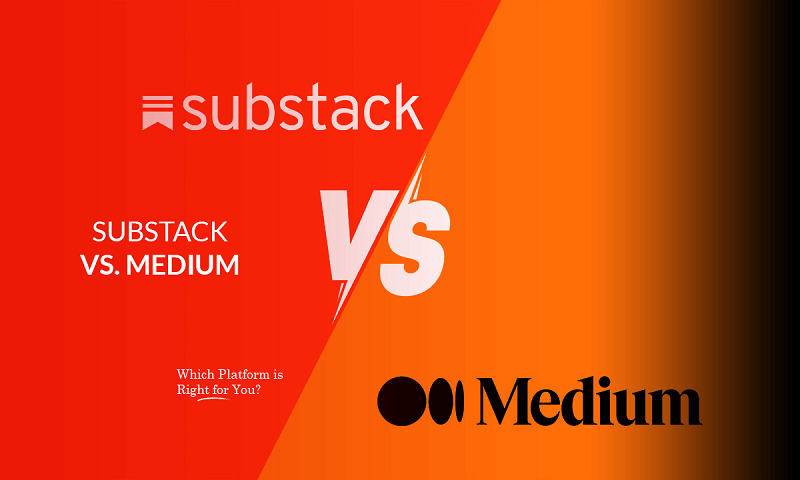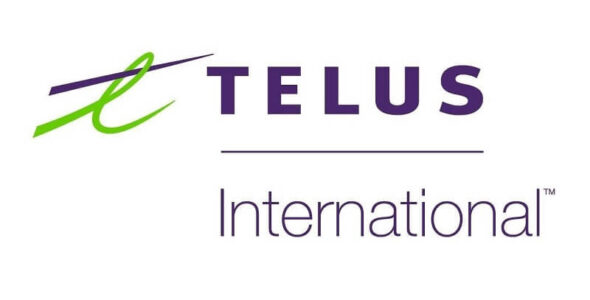Are you an aspiring writer or content creator looking for the perfect platform to share your ideas with the world? Look no further, because, in this article, we’ll be exploring the battle between two popular publishing platforms – Substack vs Medium. Both platforms offer unique features and benefits, but deciding which one is right for you can be a daunting task. Substack, known for its simplicity and newsletter-style approach, has gained popularity among writers who want to build a loyal subscriber base.
On the other hand, Medium, with its vast network of readers and built-in monetization options, appeals to those seeking a wider audience and potential revenue streams. Whether you’re a seasoned writer or just starting out, it’s important to choose a platform that aligns with your goals and maximizes your content’s reach. Join us as we delve into the differences between Substack vs Medium, and ultimately help you make an informed decision on which platform suits you best.
Key differences between Substack and Medium
When it comes to choosing a publishing platform, understanding the key differences between Substack and Medium is crucial. Substack, founded in 2017, has gained popularity for its simplicity and focus on newsletters. It allows writers to build a loyal subscriber base by offering paid and free newsletter subscriptions. Medium, on the other hand, was launched in 2012 and has since become a go-to platform for writers looking to reach a wider audience. It is known for its vast network of readers and built-in monetization options. While both platforms offer opportunities to showcase your writing, they have distinct features that set them apart.
Substack’s simplicity is one of its biggest advantages. It offers a clean and intuitive interface, making it easy for writers to create and publish content. The platform focuses on newsletters, allowing writers to engage directly with their subscribers and build a loyal following. Substack also provides options for paid newsletters, giving writers the opportunity to monetize their content.
On the other hand, Medium offers a more traditional blogging experience. It allows writers to publish articles on a wide range of topics, reaching a larger audience. Medium’s built-in monetization options, such as the Partner Program, allow writers to earn money based on engagement and subscriptions. Overall, Substack’s simplicity and focus on newsletters make it ideal for writers who want to build a loyal subscriber base, while Medium’s larger audience and monetization options appeal to those seeking a wider reach and potential revenue streams.
Pros and cons of using Substack for publishing
Substack has several advantages that make it an appealing platform for writers. One of the biggest advantages is its simplicity. Substack’s clean and intuitive interface makes it easy for writers to create and publish content without any technical know-how. The platform’s focus on newsletters also allows writers to build a loyal subscriber base and engage directly with their audience. Substack provides options for both free and paid newsletters, giving writers the opportunity to monetize their content and earn a steady income. Additionally, Substack offers built-in tools for email marketing, making it easy to promote your newsletter and attract new subscribers.
However, Substack does have some limitations that writers should consider. One of the main drawbacks is that it is primarily focused on newsletters. While this can be an advantage for writers who want to build a loyal subscriber base, it may not be ideal for those looking to publish articles on a wide range of topics. Substack’s monetization options are also limited compared to platforms like Medium. While you can earn money through paid newsletters, the potential for revenue may be lower compared to platforms with larger audiences and more extensive monetization options. Finally, Substack’s simplicity may be a disadvantage for writers who prefer a more customizable and feature-rich publishing experience.
In summary
Substack’s simplicity, focus on newsletters, and monetization options make it an attractive platform for writers looking to build a loyal subscriber base and earn income through their content. However, writers should consider its limitations, such as the lack of extensive monetization options and the platform’s focus on newsletters, before making a decision.
Pros and cons of using Medium for publishing
Medium offers several advantages that make it a popular platform among writers. One of the biggest advantages is its vast network of readers. With millions of active users, Medium provides a wider audience for writers to reach and engage with. This can be particularly appealing for writers who want to gain exposure and increase their online presence. Additionally, Medium offers built-in monetization options through its Partner Program. This allows writers to earn money based on engagement, such as claps, and subscriptions. The Partner Program provides a potential revenue stream for writers who want to monetize their content.
However, Medium also has some drawbacks that writers should consider. One of the main limitations is the lack of complete control over the platform. While Medium offers a user-friendly interface, writers have limited customization options compared to platforms like Substack. This can be frustrating for writers who prefer a more personalized and unique publishing experience. Additionally, earning significant income through Medium’s Partner Program can be challenging, especially for writers who are just starting out. The program relies heavily on engagement and subscriptions, which may require a large following and consistently high-quality content. Finally, Medium’s focus on articles may not be ideal for writers who prefer a newsletter-style approach or want to explore different formats.
In summary
Medium’s vast network of readers, built-in monetization options, and potential for exposure make it an appealing platform for writers seeking a wider audience and potential revenue streams. However, writers should consider the limitations, such as limited customization options and the challenge of earning significant income through the Partner Program, before making a decision.
Choosing the right platform for your goals and audience
When it comes to choosing the right platform for your goals and audience, it’s important to consider several factors. First and foremost, think about your goals as a writer. Are you looking to build a loyal subscriber base and engage directly with your audience? Or are you more interested in reaching a wider audience and potentially earning income through monetization options? Understanding your goals will help you determine which platform aligns best with your needs.
Next, consider your target audience. Who are you writing for, and where are they most likely to be found? If your target audience consists of avid readers who enjoy long-form articles, Medium may be the better choice. On the other hand, if your audience prefers a more personalized and intimate experience, Substack’s newsletter-style approach may be more suitable. It’s important to choose a platform that caters to your target audience’s preferences and habits.
Additionally, think about the type of content you want to create. Are you interested in writing articles on a wide range of topics, or do you prefer a more focused and niche approach? Medium offers flexibility in terms of the topics you can cover, while Substack’s newsletter format may be better suited for writers with a specific niche or theme.
Lastly, consider the monetization options available on each platform. If earning income through your writing is a priority, Medium’s built-in monetization options, such as the Partner Program, may be more appealing. However, if you value simplicity and direct engagement with your subscribers, Substack’s paid newsletter subscriptions can provide a steady income stream.
By considering these factors, you can make an informed decision on which platform is right for you and your goals as a writer.
Monetization options on Substack and Medium
Both Substack and Medium offer monetization options for writers, albeit in different ways. Substack’s main monetization option is through paid newsletter subscriptions. Writers can set a price for their newsletter and offer exclusive content to subscribers. This allows writers to earn a steady income from their subscribers’ support. Substack also provides tools for email marketing, making it easy to promote your newsletter and attract new subscribers.
Medium, on the other hand, offers monetization through its Partner Program. This program allows writers to earn money based on engagement and subscriptions. Writers can earn revenue through claps, which are similar to likes or applause, as well as through Medium’s membership program, which provides access to exclusive content. The Partner Program can be a potential revenue stream for writers who want to monetize their content and earn income based on reader engagement.
Monetization options on Substack and Medium
Both Substack and Medium offer monetization options for writers, albeit in different ways. Substack’s main monetization option is through paid newsletter subscriptions. Writers can set a price for their newsletter and offer exclusive content to subscribers. This allows writers to earn a steady income from their subscribers’ support. Substack also provides tools for email marketing, making it easy to promote your newsletter and attract new subscribers.
Medium, on the other hand, offers monetization through its Partner Program. This program allows writers to earn money based on engagement and subscriptions. Writers can earn revenue through claps, which are similar to likes or applause, as well as through Medium’s membership program, which provides access to exclusive content. The Partner Program can be a potential revenue stream for writers who want to monetize their content and earn income based on reader engagement.
It’s important to note that both platforms have their own monetization models, and the potential for revenue may vary. Substack’s paid subscription model provides a direct income stream from subscribers, while Medium’s Partner Program relies on engagement and subscriptions. When deciding between the two platforms, consider your goals and audience, as well as the potential for revenue on each platform.
Tips for maximizing your visibility on Substack and Medium
Once you’ve chosen a platform, maximizing your visibility is crucial to reach your target audience and achieving your goals as a writer. Here are some tips for maximizing your visibility on Substack and Medium:
- Consistency is key: Regularly publish high-quality content to keep your subscribers or followers engaged. Consistency builds trust and keeps your audience coming back for more.
- Utilize social media: Promote your content on social media platforms to reach a wider audience. Share snippets or excerpts of your articles to entice readers, and include a link to your Substack newsletter or Medium profile.
- Engage with your audience: Respond to comments and engage with your readers on both Substack and Medium. Encourage discussions and create a sense of community around your writing.
- Collaborate with other writers: Collaborating with other writers can help you expand your reach and tap into new audiences. Consider guest posting on other Substack newsletters or Medium publications to increase your visibility.
- Optimize for SEO: Use relevant keywords and optimize your content for search engines. This will help your articles rank higher in search results and attract organic traffic to your Substack newsletter or Medium profile.
- Experiment with different formats: Don’t be afraid to try different formats, such as audio or video content, to cater to different audience preferences. Experimenting with new formats can help you stand out and attract a wider audience.
Remember, building visibility takes time and effort. Consistently producing high-quality content, engaging with your audience, and promoting your work across different channels will help you maximize your visibility on Substack and Medium.
Conclusion
Choosing the right publishing platform is an important decision for writers and content creators. Substack vs Medium offers unique features and benefits, each catering to different goals and audiences. Substack’s simplicity and focus on newsletters make it ideal for writers who want to build a loyal subscriber base, while Medium’s vast network of readers and built-in monetization options appeal to those seeking a wider audience and potential revenue streams.
By considering your goals, target audience, and content preferences, you can make an informed decision on which platform suits you best. Remember to maximize your visibility through consistency, social media promotion, engagement with your audience, collaboration with other writers, SEO optimization, and experimentation with different formats. With the right platform and strategies, you can share your ideas with the world and make a lasting impact as a writer.

 My Account
My Account 

